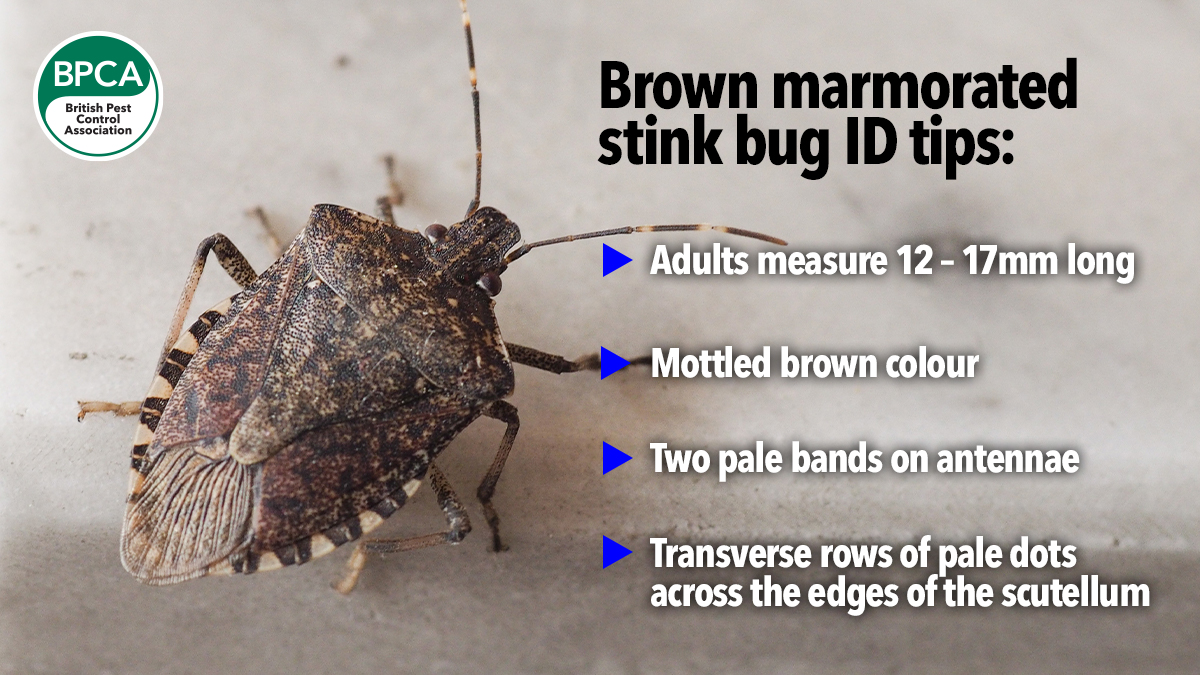This week the Brown marmorated stink bug (Halyomorpha halys) has been officially reported as present and active in the UK, prompting calls for pest controllers to keep an eye out and report any sightings.

The bug is an insect native to China, Japan, and other Asian regions, but has invaded the US and parts of Europe in recent decades.
"Its arrival in the UK has been predicted for several years," says Clive Boase, entomologist and Principal Consultant at The Pest Management Consultancy.
Now experts at the Natural History Museum have confirmed three sightings: in London, Essex and Suffolk.
The stink bug gets its name from the unpleasant smell it emits from glands under its thorax as a defense mechanism.
A serious agricultural pest, certain crops such as plums, cucumbers, and tomatoes, as well as ornamentals, are at risk from the stink bug.
"However, for our pest control industry, it is the bug’s tendency to enter buildings in numbers in the autumn, in order to hibernate, that is likely bring it to our attention," continues Clive.
"Cluster of bugs hibernating in the corner of window frames or in curtain pelmets, can produce an unpleasant and persistent odour, especially if disturbed. However, they do not otherwise damage buildings or harm people. This behaviour is similar to the Harlequin ladybird, another invasive pest to arrive recently in the UK."
Although there have only been three confirmed sightings of the stink bug in the UK to date, Max Barclay from Natural History Museum believes there could already be many more already in residence across the South East.
“At the moment it can survive in a few parts of the country,” he said. “But if the climate gets a little bit warmer which is likely to happen, the possible areas where it can survive are going to increase.”
Identification

Clive says that the Brown marmorated stink bugs are broadly similar in general appearance to our native shield bugs.
Adults measure 12 – 17mm long, and are a mottled brown colour. They are very similar in appearance to our native Hairy Shield Bug, but the BMSB has only two pale bands on its antennae (while the Hairy Shield bug has three).
Additionally, BMSB has transverse rows of pale dots across the edges of the scutellum (plate covering the thorax) which are lacking in the Hairy Shield Bug.
REPORT SIGHTINGS
The Natural History Museum is calling on anyone who thinks they may have spotted a stink bug to post it on the Museum’s Facebook group for identification.
You could also report it to the Non-Native Species Secretariat (NNSS).
nnss@apha.gov.uk

Source: Online